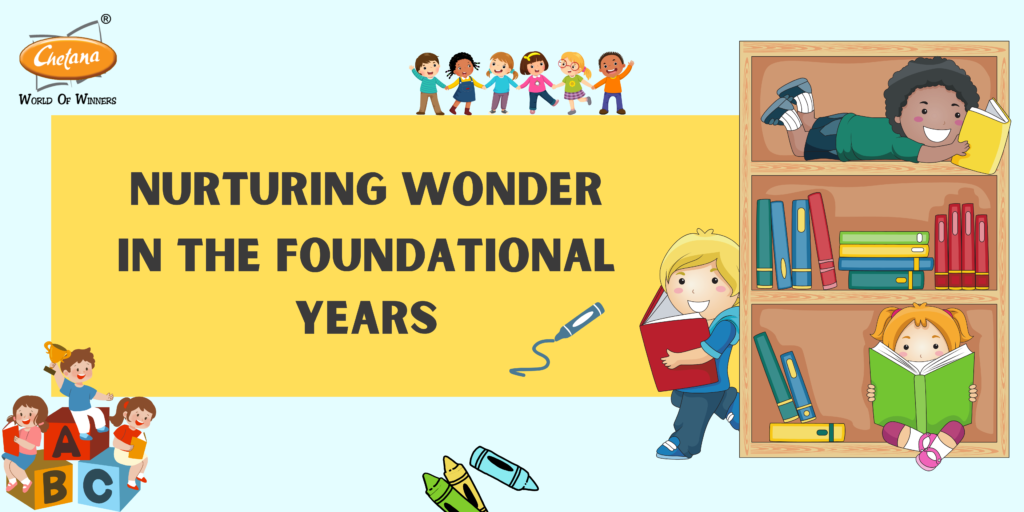Today as we embrace technology in the fast-paced challenging world, as it eases our lives with just a click, still there is a profound innocence hidden in the simplicity of childhood. Nurturing wonder in the foundational years preserves this simplicity and joy.
These early years are filled with abundant curiosity as the children explore their surroundings. They are learning each day as they grow.
But when it comes to modern-day education as modern-day educators we must not forget and remember the importance of cultivating and “nurturing wonder” in the little ones.
Curiosity is the foundation of learning which drives exploration, inquiry and discovery. We are part of a world where knowledge is constantly evolving in this fast-paced world where curiosity is not beneficial but extremely essential.
But the question arises, how we as educators nurture/foster curiosity as each child learns at his/her own pace?
Undoubtedly the most effective way is to learn through trial and error.
Instead of giving ready solutions, encourage exploration, experimentation,
Let the children falter, and make mistakes. Let them unlearn and re-learn. Through these experiences children learn resilience, problem-solving and above all joy of discovery whether it is inside or outside the classroom.
Engagements like building towers with blocks, mixing colours, and exploring sink and float. Everyday experiences like these hold profound significance for children.
There is a classroom outside the classroom:
Digging in the dirt, exploring the beaches, observing the clouds, feeling the mild breeze on the face, all of these tangible experiences are simple fun filled activities that ignite curiosity and wonder. They promote sensorial learning, which elevates learning experiences making them more meaningful and engaging.
A teacher’s role is very crucial in fostering curiosity whether it is inside or outside the classroom. Facilitation is the mantra here. By creating a safe and supportive learning environment teachers can enable and empower the children to ask questions, make mistakes, and curate new ideas. Teachers act as the guiding light collaborating children to work together to solve problems, make new discoveries and share ideas.
The lessons that we learn from nature are always very profound .These are the wholesome experiences we learn outside the four walls of the classroom, the children are observing at all times. While on a visit/field trip to a local farm or aquarium, on a nature walk, or strolling in a mall with parents. These observations provide experiences and raise a sense of wonder and awe. Children connect with the environment around them in a meaningful way, subtly fostering a sense of curiosity.
Freedom to experiment:
Beyond this, we must give children the freedom to experiment, to err and at times get bored. These experiences are not just acceptable but are also essential for their growth and development.
Instead of just feeding information, we should as educators and caretakers encourage the children to be independent thinkers and explore the world from their perspective at their own pace. When the children gain these experiences then children would develop resilience and confidence to face the challenges and requirements of the modern world.
In the foundational years we need to nurture wonder and let the children learn to think, rethink, strategize, unlearn, learn and explore in their own way as each child is unique and everyone has a different learning style.
As we conclude let us embrace the magic of childhood and nurture the curiosity of the next generation, for it’s through curiosity that we unlock the boundless potential of the human mind.

